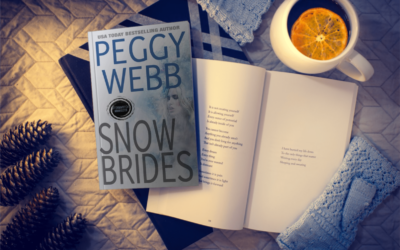BREAKING OUT OF THE SAMENESS WRITING RUT
By
Vicki Hinze
You’ve written a lot of books. Now you’re sensing yourself or hearing from your editor that all of your lead characters sound, think, and act as if they are the same person. You’re on a tight deadline for your next book, and you have no idea what to do to fix this problem quickly. You need insight, and you need it now.
The quick-fix is: Acknowledge. Accept. Act.
Acknowledge. Writers get into a rut. While they are creative people—some would say eccentric and flighty; I say, they have one foot planted firmly on the ground and one foot firmly in the clouds—writers who write for a long time do tend to cycle.
At first, their characters tend to sound like the writer. Then the writer learns to differentiate story people, to let and even encourage them to be the unique (and universal) people they are. The writer learns to disappear from the page, meaning to filter out his or her own voice and to project the character’s.
After a time writing, the story people gravitate to specific types that appeal most, repulse most, or best fit the story types (think author theme) the specific writer writes. There are specific types of people who are best-suited to tell specific types of stories, and that must be respected by the writer. The author who recognizes this also recognizes the need to guard against sameness and author intrusion into the story. That is accomplished by acceptance of the need to differentiate and respecting the individual created. That is acceptance.
Accept. Writers tend to cycle and get in this “sameness” rut because they think and process what they take in and they conclude what they want to put out in the same way, book after book.
In other words, the writer looks at things and story people through their own prism. They note what they deem is important and significant, confront complications that they weigh as minor or major (while someone else might assign those same obstacles different weights), and they seek solutions using the same criteria and methods s/he would use in real life. So the risk for this “sameness” in characters is easy to understand, and that awareness and acceptance should factor into the actions the writer takes to respect the individual natures of the story people. Then, of course, the writer must act on the awareness and acceptance.
Act. Normally, my first recommendation is to hone observation skills. People share a lot of commonalities but they also have a vast array of unique traits. Their specific combination of unique character traits is what makes every single person different and unique. That’s respecting the individual, and this is a vital component of character creation.
When a writer fails to respect the individual, s/he insults the individual and the character actually portrayed. That’s a lose/lose situation—for the character, for the writer, and for the story. That makes identifying individual traits critical for all. So how do we do it?
The best way to identify these unique character traits—and we must before we can assign them to a specific character—is to observe people and note their traits. In observing, we discover a ton of nuances: the little things that make a person unique and different. Then, mix up selected traits and nuances that best serve the story to create the best unique individuals for that story.
Now what follows is no substitute for observation but, being on a tight deadline, the writer needs to cover a lot of ground quickly. Many authors use a service like an Indra Report (www.artcharts.com) to create distinct characters quickly. Give the character a name and birthdate—and it’s helpful to note the report is on a fictional character for a book.
You’ll get an in depth report that is a character. It is, at its core, a comprehensive birth chart (basic motivators, motivations, inclinations and character dispositions) that gives the writer a composite view of a story person. It also discloses talents and complicating drives and urges. So positives and negatives, what makes this character tick and things click for that character, and what ticks the character off. Struggles and challenges, strengths and weaknesses are disclosed. So leave room for plot twists, because the composite will drive the plot into unexpected directions that, while perhaps not natural to the writer, are natural to the character.
I tested such a report years ago and it did include what they said it would; namely, a three-dimensional character. Incorporating a character crafted from one of these reports is the fastest way discovered in three decades to resolve the character creation “sameness” challenge.
The writer must still guard against his or her own filters altering the character’s dialogue and reactions, and must work deliberately to view the story not from inside his/her head but from inside the character’s head and through his or her eyes and perspective.
Even if a writer uses such a report, he or she should not consider the report an easy out for solving the sameness challenge. The author should work diligently to hone his or her observation skills and those skills used in relating those observations.
Specifically, work not to view the story through your eyes but to experience the story through the character’s eyes.
Remember, your story is your life. This story is the character’s life.
Respect that and sameness will be but a memory. The characters will take over and break the author out of the sameness writing rut.
___________________________
<–Preordering Now
© 2016, Vicki Hinze. Hinze is the award-winning, USA Today bestselling author of nearly thirty novels in a variety of genres including, suspense, mystery, thriller, and romantic or faith-affirming thrillers. Her latest release is The Marked Bride, Shadow Watchers, Book 1. She holds a MFA in Creative Writing and a Ph.D. in Philosophy, Theocentric Business and Ethics. Hinze’s online community: Facebook. Books. Twitter. Contact.www.vickihinze.com. Subscribe to Vicki’s Newsletter.







